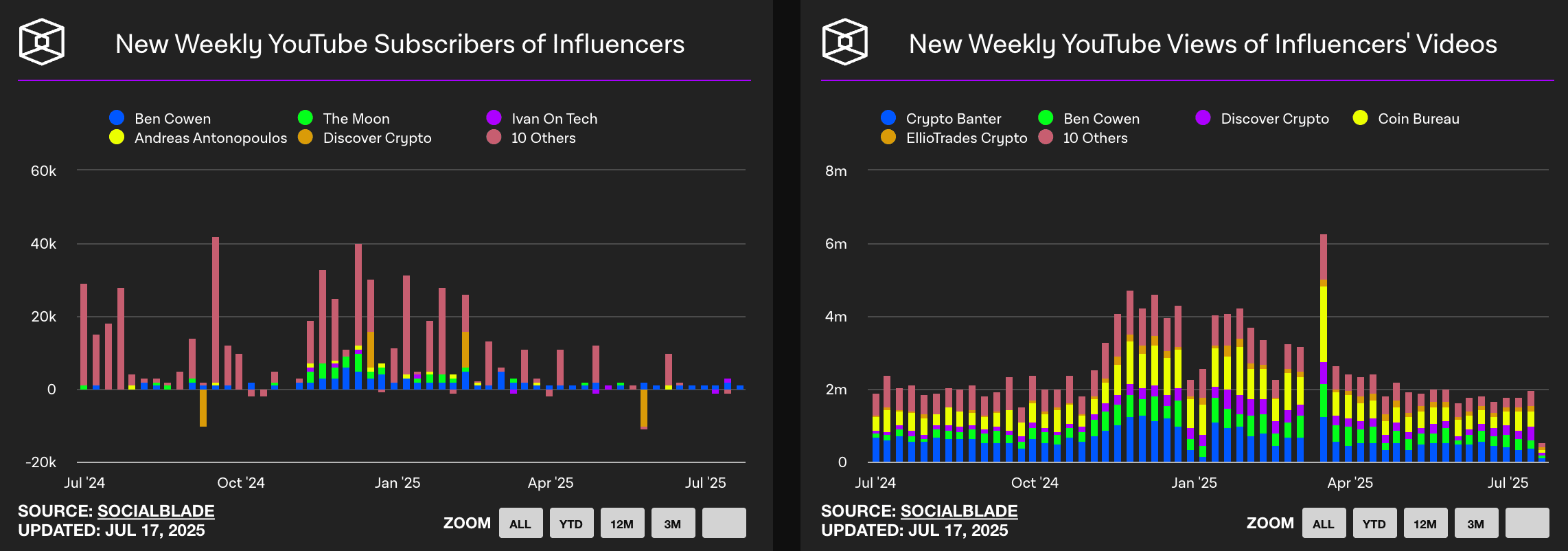
With Bitcoin reaching new historical highs, the ranking of Coinbase's app in the App Store has rapidly climbed, sparking market discussions about whether 'retail investors have returned.' This phenomenon has been a key signal in past bull markets, but the current market environment is significantly different, and it remains to be seen whether Coinbase can still serve as a barometer for retail entry and market overheating.
Coinbase climbs the rankings, familiar scenes of the bull market reappear
According to The Block data, Coinbase's ranking in the US Apple App Store has risen more than 70% since mid-June, climbing from 436 to 126, reflecting that the user download surge and the recovery of the crypto market seem to occur simultaneously.

Looking back at historical data, when Coinbase enters the top 100, it usually accompanies Bitcoin's phase price peaks, which is also a sign of an overheated market; if the ranking falls out of the top 400, it is mostly in a bear market phase.
This sudden ranking surge coincides with Bitcoin continuously breaking historical highs, hovering around $120,000. Some believe it marks the beginning of a new upward cycle, while others see it as a precursor to retail funds returning to the market and a top emerging.
(Bitcoin silently breaks through 123K: Is it a starting line preparation or a top emerging?)
Have retail investors really come back? YouTube and Google data refute.
Although the rise in App Store rankings is exciting, industry insiders remain skeptical about whether retail investors have truly returned. Bitwise Research Director André Dragosch pointed out that despite Bitcoin setting new highs, the search heat for 'Bitcoin' on Google is still at a low point, which is worlds apart from the frenzy of retail investors in 2021.

Trader Elisa also cited Google Trends data indicating that the search volume for 'crypto' is significantly lower than the peak of the previous bull market, showing that public interest has not really warmed up.
The viewership and subscription data for cryptocurrency-related content on YouTube also shows stable performance, indicating that retail interest has not increased.

The market has transformed, and overheating indicators may be unreliable.
This bull market is clearly different from the past, with Bitcoin leading the charge, Ethereum teetering, and the long-awaited altcoin season not materializing. Below, we will clarify what changes have occurred in this market cycle.
Cryptocurrency ETFs rewrite market participation patterns
Firstly, a major key difference in this bull market is the birth of spot ETFs. Since the launch of the Bitcoin spot ETF in early 2024, it has attracted over $53 billion in inflows, and the Ethereum spot ETF launched in July has also quickly accumulated $6.4 billion.
Investors can now access crypto assets through traditional brokers, no longer needing to download Coinbase or other cryptocurrency exchange apps, which has clearly changed the way retail investors participate.
In other words, Coinbase's download volume may no longer fully reflect actual market participation, and its role as a retail momentum indicator is facing severe challenges.
Tokenized stocks and cryptocurrency reserve companies have become new hotspots for retail investors outside the circle.
From Robinhood issuing tokenized stocks through its own L2, to the skyrocketing stock prices of BTC/ETH reserve companies led by MetaPlanet and SharpLink, to Circle's IPO leading the stablecoin topic, it seems that American retail investors no longer need to pursue the high risks and high returns of cryptocurrencies. Instead, they can participate in the hype of crypto topics indirectly through regulated traditional financial markets and still achieve good returns.
(Arthur Hayes: Forget CRCL, buy JPMorgan! Stablecoins will drive bank stocks up 184%)
Coinbase is still a benchmark, but no longer the only one
However, the ranking of Coinbase's app still holds symbolic significance, but with multiple platforms like Robinhood and Binance.US competing in the market today, the user distribution in the crypto world has become more fragmented, and the indicative significance of a single platform is gradually weakening.
Moreover, the FOMO tide among retail investors in the market cycle may now manifest in the form of ETFs, broker stocks, or bank stocks, and the performance of apps may have already become ineffective. As the crypto market enters an era of diversification and integration, if investors rely solely on a single indicator or outdated thinking to interpret the market, they may miss the real trends.
This article 'Have Retail Investors Returned? Coinbase Climbs to 126 in App Store Rankings, but Overheating Indicators May Already Be Unreliable' first appeared on Chain News ABMedia.



